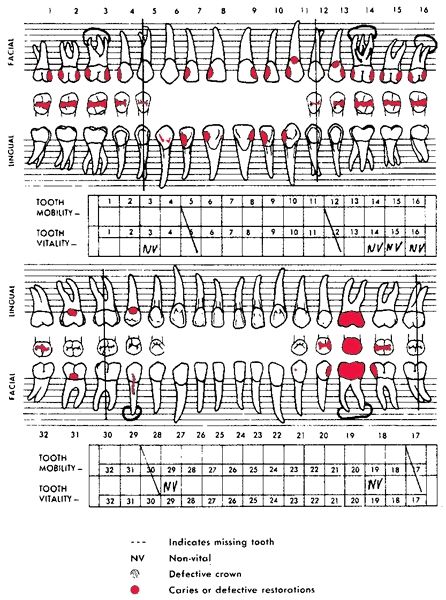Contents
In an oligopolistic market, numerous companies compete. Thus, the amount desired for a commodity is affected not only by its own price, but also by the prices of other items. We can further classify these elastic and inelastic types of demand into five categories. Elasticity is a concept in economics that talks about the effect of change in one economic variable on the other.
Therefore, depending on the particular variable that affects the demand of the product or commodity, the elasticity of demand is classified into different types. The three main types of elasticity of demand include price elasticity, income elasticity and cross elasticity. Now, let us have a look at all these three types separately to understand them a little better. Suppose, the price of a commodity is Rs. 50 and the quantity demanded in a specific market is 200 units.
- Expansion and Contraction of Demand means changes in quantity demanded or movement along a demand curve.
- Goods that have fewer substitutes such as cigarettes have less elastic and inelastic demand.
- Whereas, the result will be negative for a complementary good.
- At a price of ` 4, the pressure of excess supply still continues and hence the price falls further to ` 3.
- On the other hand, goods with no substitutes have inelastic demand.
As the price increases to Rs. 60, its demand declines to 160 units. Perfectly-elastic-DemandIn fig, the x-axis shows the quantity demanded and the y-axis shows the price. When the price is slightly decreased, 5 types of price elasticity of demand it leads to an increase in demand by a large amount i.e. Like perfectly elastic demand, the concept of perfectly inelastic is also a theoretical concept and doesn’t find a practical application.
To understand the implication of this formula, we have to study the impact of a small change in price and its resultant impact on the quantity demanded. The commodities having high prices such as jewellery, air conditioners, gold and low prices like newspapers have inelastic demand. The change in prices of these commodities leads to a little change in demand. On the other hand, medium-priced goods such as clothes, television etc have elastic demand. A little change in the prices of these goods has a great impact on their demand. Suppose, the price of a commodity is Rs 10 and the quantity demanded is 20 units.
The formula’s output may be used to assess if a product is a need or a luxury item. The result obtained from this formula helps to determine whether a good is a necessity good or a luxury good.
Perfectly elastic demanded(Ep=infinity)
It implies that a little change in the price of these commodities has a great impact on their demand. Whereas the price elasticity of demand for comfort goods like milk, fans etc is unity implying an equal proportionate change in the demand due to changes in price. The demand is said to be perfectly elastic when a small rise in price would result in a fall in demand to zero, while a small fall in price results in demand to become infinite. It is a theoretical concept only as it has no importance in the practical world. Price elasticity of demand refers to the degree of responsiveness of quantity demanded with respect to change in the price of that particular commodity, other things remain constant. According to the definition of relatively inelastic, relatively big increases in price result in relatively little changes in quantity.
In other words, change in the demand percentage is equal to the change in the price percentage. This is the condition where the demand remains uninfluenced by price changes. In general terms this is when the demand remains constant. For example, Automotive fuels , Gold, Pharmaceuticals are few examples where this principle is observed. Similarly, in practice, a household may demand larger quantity of a commodity even at a higher price because it may be ignorant of the ruling price of the commodity. Under such circumstances, the law will not remain valid.
If the price of Airtel Magic card falls, its demand will increase and demand for Essar Speed Card would fall and vice versa. In the above formula, Ep represents the symbol for price elasticity of demand. The demand curve of relatively elastic demand is gradually sloping. Relatively elastic demand refers to the demand when the proportionate change in the demand is greater than the proportionate change in the price of the good.

In a market where there is an oligopoly, multiple players compete. Thus, the quantity demanded for a product does not only depend on itself but rather, there is an effect even when prices of other goods change. The result obtained from this formula determines the intensity of the effect of price change on the quantity demanded for a commodity. This measure of responsiveness of quantity demanded when there is a change in price is termed as the Price Elasticity of Demand . According to the law of demand, other things being equal, more of a commodity will be demanded at lower prices than at higher prices. The law of demand is valid in most cases; however there are certain cases where this law does not hold good.
answers to this question
If consumers expect rise in the price of a commodity in near future, the current demand for the commodity will increase and vice versa. At a price of ` 4, the pressure of excess supply still continues and hence the price falls further to ` 3. Inferior goods(E.g.Coarse grain; rough cloth; skimmed milk; etc.). Inferior goods are those goods for which superior substitutes are available Quantity demanded of this group of commodities Have an INVERSE RELATIONSHIP with the income of the consumer. A consumer starts consuming full cream milk in place of toned milk with an increase in income. Comforts and Luxurious (E.g. Car; Air-Conditioners; etc.) Quantity demanded of these group of commodities have a DIRECT RELATIONSHIP with the income of the consumers.
Prices rose to a national average peak of almost $4.10 per petrol during the oil and gas bubble in 2008, and customers adjusted their behaviour by requesting less gas. The numerical value for unitary elastic demand is equal to 1. The demand curve for unitary elastic demand is represented as a rectangular hyperbola. In a relatively inelastic demand, the proportionate change in the quantity demanded for a https://1investing.in/ product is always less than the proportionate change in the price. However, perfectly elastic demand is a total theoretical concept and doesn’t find a real application, unless the market is perfectly competitive and the product is homogenous. An elastic demand is one that shows a larger fluctuation in the quantity demanded of a product, in response to even a little change in another economic variable.
The commodities such as toothpaste, boot polish etc. on which a small proportion of income is spent have inelastic demand. Any change in the price of these goods doesn’t affect their demand whereas for the goods on which a large proportion of income is spent, have elastic demand such as clothes, food etc.. The change in prices of these goods has great impact on its demand.
For example, if there is a hike of $0.5 in the price of a cup of coffee, there are very high chances of a steep decline in the quantity demanded. In other words, the elasticity of demand is the percentage change in quantity demanded divided by the percentage change in another economic variable. The demand is said to be perfectly elastic when a small change in the process leads to a much significant effect on the demand of the good. In other words, a short fall in the prices would cause an infinite increase in the demand and vice versa. Demand is said to be perfectly elastic if a negligible change in price leads to an infinite change in the quantity demanded. The law has been derived assuming consumers to be rational and knowledgeable about market-conditions.
A Flatter curve will represent a higher elastic demand. Thus, the slope of the demand curve for a perfectly elastic demand is horizontal. These three types of Elasticity of Demand measure the sensitivity of quantity demanded to a change in the price of the good, income of consumers buying the good, and the price of another good. It is the magnitude of change in quantity demanded in response to change in the income of the consumer.
When price of a commodity rises, its quantity demanded falls. When price of a commodity falls, its quantity demanded rises. The law of demand will also fail if there is any significant change in other factors on which demand of a commodity depends. If there is a change in income of the household, or in prices of the related commodities or in tastes and fashion etc., the inverse demand and price relation may not hold good.
Question
And buyers perceive no actual or real differences between the products offered by different firms. When utilized successfully, product differentiation creates a competitive advantage as customers view your product as superior. Product differentiationIt is the process of distinguishing a product or service from others. Tastes and preferences of consumers remain unchanged. If the country is passing through boom conditions, demand for most goods is more.
The following are the important exceptions to the law of demand. Many consumers who were unable to buy a commodity at higher price also start buying when the price of the commodity falls. A demand curve is a graphical representation of a demand schedule or demand function. A demand curve for any commodity can be drawn by plotting each combination of price and demand on a graph.

On the other hand, it has very little effect on the demand for high and low-income group people. The demand can be said as relatively inelastic when a proportionate change in quantity demanded is less than proportionate change in price. It means that the greater change in price leads to a smaller change in demand. Suppose the price of a bottle of water is Rs. 15 and its demand is 200 units.
Types or Degrees of price elasticity of demand:
But during depression condition, the level of demand falls. Changes in weather conditions also influence household’s demand.E.g. – Extraordinary hot summer push up the demand for ice-creams, cold drinks, coolers etc. The household’s demand for goods also depends upon sociological factors like class, family background, education, marital status, age, locality, etc. Generally, larger the size of population of a country, more will be the demand of the commodities.
High tax on a commodity will lead to fall in the demand of the commodity. The equilibrium price is determined by the intersection between demand and supply therefore, it is also called as the MARKET EQUILIBRIUM. Thus, we can conclude that pressure of excess supply reduces the price. The factors that could bring about changes in the incomes of the consumers. Initially, with an increase in the income, the demand for necessaries also rises upto some limit. Beyond that limit, an increase in income will leave the demand unaffected.

